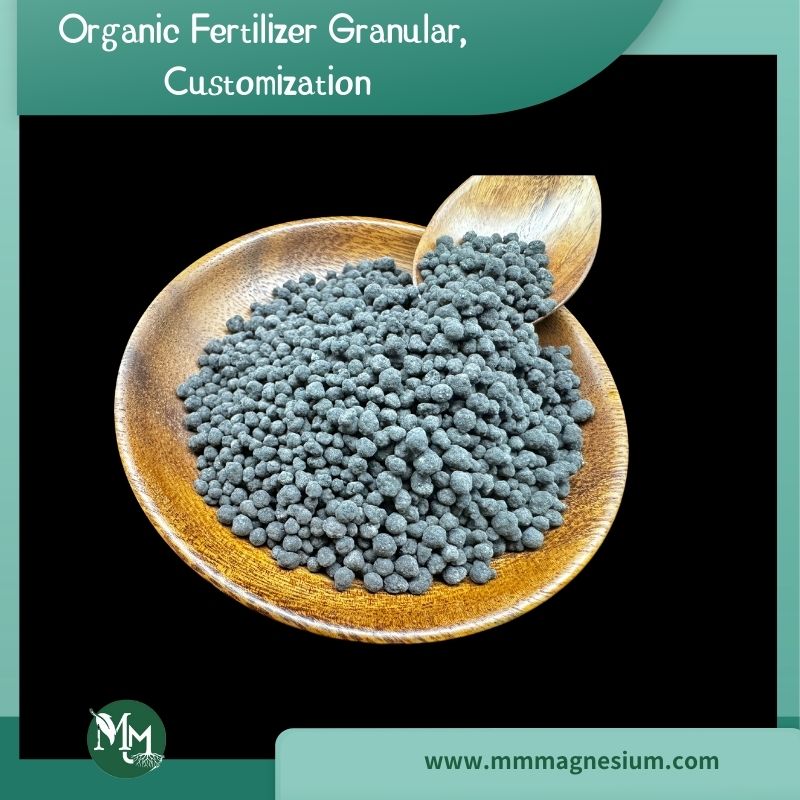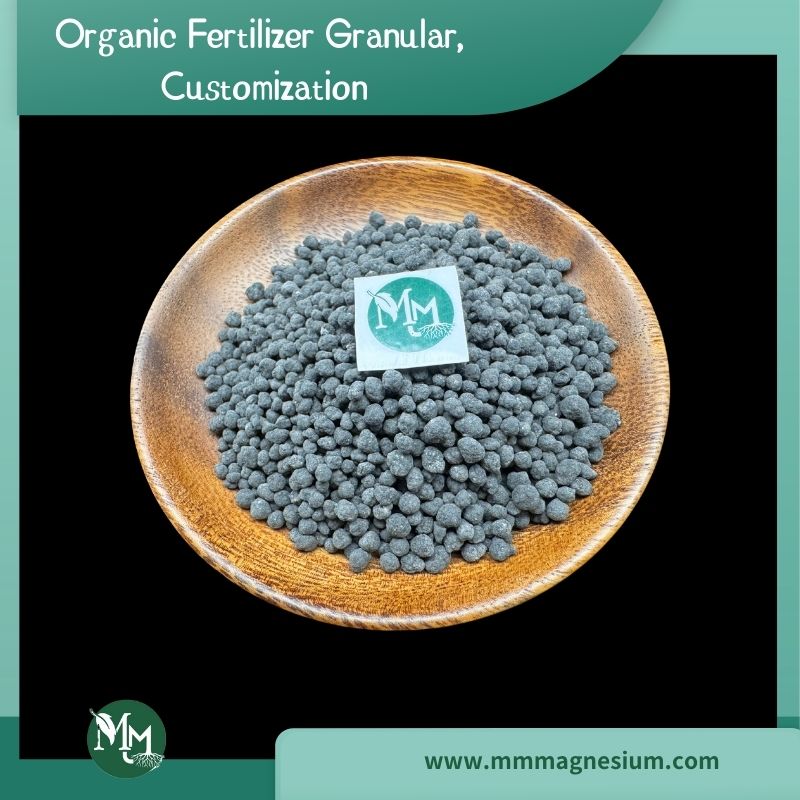

Ca+Mg+S≥5%
Organic matter≥15%
Humic acid≥10% (or amino acid≥10%)
Fulvic acid≥3%
PH:5-9
Mn+Zn+Fe+B+Cu≥0.1%
Cation exchange capacity 25cmol/kg
Granular size:2-5mm
Applicable crops: Corn, rice, soybean, vegetables, fruit trees, medicinal materials, gardens, flowers, cash crops, aquatic plants, etc.




Yingkou Maomei Agricultural Technology Co., Ltd., relying on high-quality mineral resources, produces Organic Fertilizer Granular, Customization products with advanced technology and the following characteristics:
Products are exported to the United States, Russia, Indonesia, Canada, Spain, Malaysia, Bangladesh, and other countries, and also cover all provinces, cities, and regions across the country.
For more service advantages of Yingkou Maomei Agricultural Technology, please see Why choose us? and Factory Photos.
Advantages of Organic Fertilizer Granular, Customization
1. Mineral elements: Create "root bionics" to absorb nutrients lost from fertilizers, and increase fertilizer utilization from 30% to 50%.
2. Immune elements: Promote early maturity, improve crop vitality, increase crop resistance, accelerate metabolism, and resist pests and diseases
3. Medium and trace elements: enrich energy, supplement crop nutrition, increase taste, and increase yield
4. Microbial derivatives: regenerate after microorganisms are inactivated, resist continuous cropping, inhibit harmful pathogens in the soil, and increase soil activity.

Fertilization Recommendations
Used as a base and topdressing fertilizer, the seed fertilizer is separated by 10 cm, and generally applied by broadcasting, hole application, strip application, etc. The dosage per hectare is about 150 kg, which can reduce the dosage of chemical fertilizer by 30%. The specific application should be adjusted according to the production conditions such as soil and crops, and it is best to use it under the guidance of technicians.

1. Protect from rain and sunlight, store in a ventilated and dry place, and do not transport or store together with toxic and hazardous substances.
2. Each bag is 25 kg, and we can also provide packaging as small as 1 kg or as large as ton bags according to customer requirements.
3. Plastic woven bags, lined with plastic inner bags. We provide all available packaging such as paper plastic bags/kraft paper bags/PE bags.
4. We provide a variety of transportation methods: road transportation, railway transportation, air transportation, container transportation, and ocean transportation.
5. Our company's marks can provide OEM or neutral marks.

FAQ
1.What is the pH value of fertilizer?
The pH value of our fertilizers is usually within an appropriate range to meet the growth needs of different crops. The specific pH value will be adjusted according to the product type and formula to ensure the best absorption effect and growth environment. Our fertilizers are strictly controlled to maintain a stable pH value and will not have an adverse effect on the soil.
2.Is there any feedback from other users on this fertilizer?
We have many customer feedback. This feedback can help you better understand the effect and user satisfaction of our products. We can provide some user cases and evaluations for your reference.

Product Knowledge:Humic Acid vs Fulvic Acid

Humic acid and fulvic acid are generated through the degradation and transformation of natural organic matter, usually from weathered coal, peat, lignite, animal and plant residues, compost, etc. After a long period of biological and chemical action, these raw materials form humic acid and fulvic acid rich in organic matter.
1. Molecular weight and structure
Humic acid has a larger molecular weight, a more complex molecular structure, and contains a variety of functional groups. These functional groups give humic acid a stronger cation exchange capacity and complexing ability, enabling it to effectively bind to nutrients in the soil, especially metal cations, thereby improving soil fertility.
Fulic acid has a smaller molecular weight, a simpler molecular structure, and contains more low-molecular-weight organic acids and phenolic compounds. This smaller molecular weight makes fulvic acid more biologically active and can be more easily absorbed and utilized by plants. There are also more functional groups in fulvic acid, which can form soluble complexes with nutrients in the soil, improving the efficiency of plant absorption of these elements.
2. Color and solubility
Humic acid is usually black or dark brown, which is related to its complex molecular structure and high molecular weight. Due to its large molecular weight, humic acid is mainly soluble in alkaline solutions, and its solubility is low under acidic and neutral conditions. This characteristic makes humic acid more persistent in the soil and can improve soil structure and fertility for a long time.
Fulvic acid is yellow or light brown, which is related to its small molecular weight and simple molecular structure. Fulvic acid can be dissolved in solutions of various pH values, including acidic, neutral and alkaline solutions. This wide solubility enables fulvic acid to move more quickly in the soil and be absorbed and utilized by plant roots. In addition, the high solubility of fulvic acid also enables it to quickly form complexes with various nutrients in the soil, improving the effectiveness of these nutrients.
3. Functional focus
The main function of humic acid is to improve soil structure and soil fertility. Due to its large molecular weight and complex molecular structure, humic acid can increase the aggregate structure of the soil and improve the water retention and air permeability of the soil. This is not only beneficial to the growth of plant roots, but also reduces the loss of water and nutrients. In addition, humic acid can form stable complexes with metal cations in the soil to prevent these nutrients from being leached, thereby maintaining soil fertility.
Fulvic acid focuses more on improving plant absorption and stress resistance of nutrients. Due to its small molecular weight, fulvic acid can quickly enter the plant body and improve the plant's absorption efficiency of nutrients. Fulvic acid also has a strong chelating ability, which can convert trace elements in the soil into a form that is easily absorbed by plants and promote plant growth and development. In addition, fulvic acid can also enhance plant resistance to stress and improve its resistance to environmental stresses (such as drought, salinity, and pests and diseases), thereby increasing crop yield and quality.
Yingkou Maomei Agricultural Technology Co., Ltd
Name: Brenda
Mobile:86-188-7490-2028
Tel:86-400-699-8826
Whatsapp:86-18874902028
Email:info@maomeimg.com
Add:Qianjia Village, Nanlou Economic Development Zone, Yingkou City, Liaoning Province, China